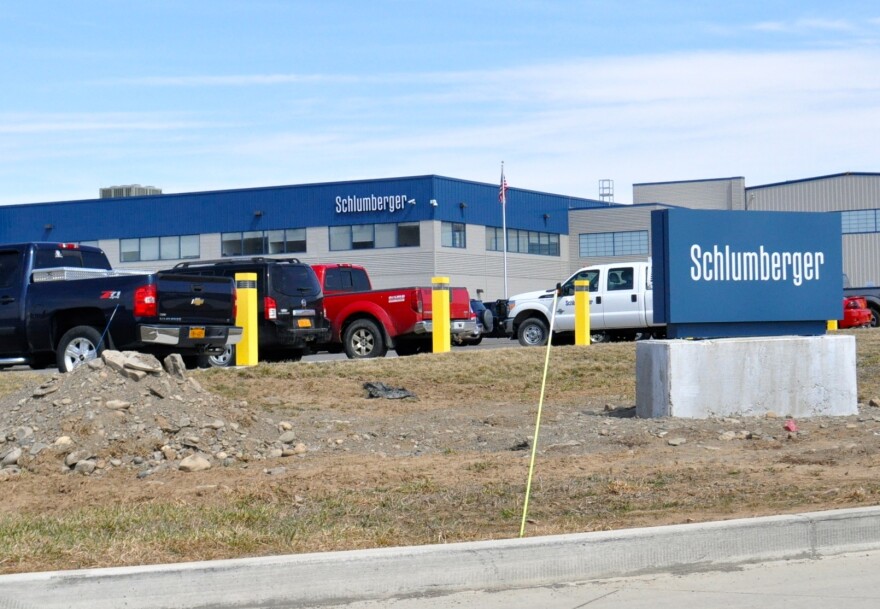The City of Elmira is just seven miles from the Pennsylvania border. And for four years, the natural gas boom in Pennsylvania’s Northern Tier crossed over the border and boosted Elmira’s economy. But that boom has slowed down.
During the peak of activity, between 2008 and 2011, Chemung County had a median income growth of 27%, according to county executive Tom Santulli.
The slowdown began in 2012, leading to a $3 million decline in sales tax revenue. Santulli says the growth and last year’s decline were mainly driven by the natural gas industry across the border.
“So right now we’re somewhat in a slump and obviously there’s no business being driven by New York because we’re not doing it,” says Santulli.
Fracking is on hold in New York as the state's Department of Health reviews potential health impacts. Recently, Gov. Cuomo criticized the pro-fracking movement for failing to fully address the public's concerns.
At a public lecture organized by an Elmira anti-fracking group, three well-known speakers laid out the arguments against fracking.
“So that’s a typical fracking site. It’s not one acre. It’s not here today, gone tomorrow. That’s heavy industrialization, it’s going to be there for years,” says Cornell professor Tony Ingraffea, referring to an image of a fracking well pad.
Ingraffea is a co-author of a controversial study claiming that fracking’s methane emissions could cause more rapid climate change than the use of coal.
Ingraffea was brought to Elmira by a group pushing for a local ban on fracking. Elmira is the largest city in Chemung County and, along with nearby Binghamton, is a center of commerce in the heart of the gas-rich Marcellus Shale.
And, like Binghamton and its mayor Matt Ryan, Elmira’s mayor, Susan Skidmore, is strongly opposed to fracking.
“I don’t think anybody can make it safe enough to protect our water and our environment,” says Skidmore.
She points to the industrial zone in neighboring Horseheads as an example of what comes with fracking. There, rail cars bring in silica used in the fracturing process. It’s then loaded onto trucks and sent to Pennsylvania.
“So you go down there and you stand on a city street which is right around the corner, you can see these piles of silica that have been released from the undercarriages of the rail cars,” says Skidmore.
In industrial settings, inhaling silica can lead to the lung disease silicosis. For years, the federal government has delayed rules to protect workers exposed to silica because of industry opposition. The Environmental Protection Agency doesn’t regulate silica released into the air.
“So why would I be happy about it? I’m not too happy about it. I want some better control over it, that’s for one thing,” says Skidmore.
Fracking opponents point to quick reversals like the one in Chemung County as a reason to be wary of the industry’s promises of economic revival.
But county executive Santulli adds that the cycles in the natural gas industry, where companies shift their focus from region to region, are similar in any sector of the economy.
“I can’t think of any occupation or any job or any company – General Motors, Ford, IBM - that you’re guaranteed a job and a full job in large numbers forever,” says Santulli.
Economist Jannette Barth also spoke in Elmira. Barth frequently writes and gives lectures on the long-term economic effects of the natural gas industry.
“The areas of the United States having the highest levels of long-term poverty tend to be found in the very places that were once the site of thriving extractive industries,” says Barth.
Barth went on to cite studies that found it’s the people at the lowest end of the economic scale who feel most of the negative impacts that come along with drilling. While fracking in New York is on hold in New York, in Elmira, the process of dealing with the industry is already well under way.





